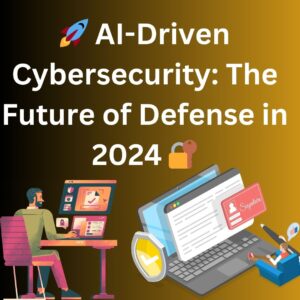
A Paradigm Shift: In 2024, the explosion of connected devices, the rise of IoT (Internet of Things), and the demand for real-time processing are pushing traditional cloud-based AI systems to their limits. Have you ever wondered how we can overcome bandwidth constraints, reduce latency, and enhance privacy without compromising AI performance? The answer lies in Edge AI and Federated Learning, two revolutionary technologies reshaping the future of AI deployment.
What’s Happening in 2024? Edge AI brings AI computation closer to where the data is generated—on local devices or “at the edge” of the network. Instead of sending massive amounts of data to centralized cloud servers for processing, Edge AI performs these operations locally on devices like smartphones, sensors, or autonomous vehicles. This enables real-time decision-making, reduces latency, and minimizes bandwidth usage, which is critical in applications such as autonomous driving, industrial automation, and smart cities.
On the other hand, Federated Learning enables decentralized machine learning, where multiple edge devices train AI models locally using their own data. The trained models are then aggregated without sharing the raw data itself, ensuring that sensitive information, like personal health records or private messages, never leaves the device. This allows for highly accurate AI systems without compromising user privacy—a critical concern in 2024, given increasing regulatory pressures around data protection (e.g., GDPR, CCPA).
Why Should You Care? In 2024, the global AI landscape is facing unprecedented challenges in data privacy, bandwidth limitations, and real-time processing needs. Edge AI and Federated Learning offer solutions to these challenges by decentralizing AI computation. These technologies enable businesses to deploy AI where it matters most—at the source of data—while safeguarding privacy and ensuring compliance with stringent data regulations.
Consider industries like healthcare, manufacturing, and automotive, where milliseconds can make the difference between success and failure. With Edge AI, medical devices can instantly process vital signs and alert physicians in real-time without relying on external servers. Similarly, in autonomous vehicles, Edge AI ensures split-second decision-making to navigate traffic, prevent accidents, and enhance passenger safety.
Future-Proof Example: Imagine a world where a fleet of self-driving cars, each equipped with AI, constantly learns from its environment and shares these learnings across the entire fleet without transmitting sensitive data back to a central server. Federated Learning allows each car to improve its driving algorithms based on its local experiences while keeping all data secure. This decentralized, privacy-preserving approach will be the gold standard for autonomous systems in 2024.
Action Point for 2024 and Beyond: Here’s how we can embrace Edge AI and Federated Learning to unlock new capabilities in the AI space:
- Real-Time AI Processing: Leverage Edge AI for applications requiring immediate decision-making, such as smart manufacturing systems, wearables for health monitoring, or AI-driven retail analytics. These systems will reduce latency and improve responsiveness.
- Privacy-First AI Models: Adopt Federated Learning to build AI models that can learn from decentralized data without compromising privacy. This is especially crucial in industries dealing with sensitive information like healthcare, finance, and consumer electronics.
- AI at the Edge: Deploy AI systems on local devices like sensors, cameras, and robots, cutting down on the need to transmit large volumes of data over networks and ensuring data stays where it’s generated.
Next Steps for 2024:
- Invest in Edge AI Infrastructure: Ensure that our edge devices, from smartphones to industrial sensors, are equipped with the processing power to handle advanced AI tasks locally.
- Explore Federated Learning Use Cases: Identify opportunities to deploy Federated Learning in our operations, especially where data privacy and compliance are critical. For instance, building AI models that analyze customer data on local devices without transferring sensitive information to the cloud.
- Monitor Edge AI Trends: Stay up-to-date on the latest advancements in Edge AI hardware and Federated Learning frameworks to maintain a competitive edge and ensure our systems are future-proof.






